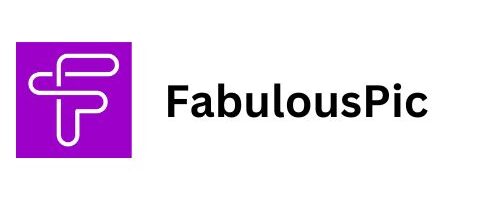Life can throw unexpected curveballs at the most inconvenient times. Whether it’s a medical emergency, sudden car repairs, or a missed paycheck, financial crises can leave you scrambling for funds. Knowing how to access emergency financial help is key when you need money quickly. This guide explores four practical options when you need fast financial assistance, along with their benefits and drawbacks, helping you make informed decisions during challenging times.
Personal Loans: A Flexible Solution for Quick Cash
A personal loan is one of the most common ways to access funds during an emergency. Offered by banks, credit unions, and online lenders, personal loans allow you to borrow a lump sum that you repay in fixed installments over a set period.
Pros of Personal Loans
- Quick Access to Funds: If you meet the lender’s requirements, approval and disbursement can take as little as 24 hours with some online lenders.
- Predictable Repayment Terms: With fixed interest rates and monthly payments, personal loans provide clarity and consistency.
- No Collateral Required (in some cases): Unsecured personal loans don’t require an asset (like your car or home) as collateral, reducing the risk of losing valuable belongings.
Cons of Personal Loans
- Credit Score Requirements: Most lenders set a minimum credit score for approval, which could affect borrowers with poor credit.
- High Interest for Low Credit Scores: If approved with a lower credit score, expect higher interest rates, which can make repayment challenging.
- Application Process: While faster online loan options exist, traditional personal loans can involve paperwork and take a few days to process.
A special type of personal loan is an auto title loan, such as those offered in Salt Lake City, where your vehicle is used as collateral. However, these loans often come with high interest rates and the risk of losing your car if you cannot repay, so caution is advised.
Credit Card Cash Advances: Convenient but Costly
If you have a credit card, cash advances can provide instant access to funds from an ATM or at your bank. This option is straightforward but comes with significant costs.
How Cash Advances Work
A cash advance allows you to withdraw money against your available credit limit. Unlike credit card purchases, cash advances often incur additional fees and start accruing interest immediately.
Pros of Credit Card Cash Advances
- Convenience: Accessing cash through your credit card is quick and easy, especially during emergencies.
- No Additional Application: Since it uses your existing credit limit, there’s no need for a separate approval process.
Cons of Credit Card Cash Advances
- High Fees: Most card issuers charge a cash advance fee, which is usually a percentage of the borrowed amount.
- Immediate Interest: Unlike regular credit card purchases that offer a grace period, cash advances begin accruing interest immediately, often at higher rates.
- Credit Impact: Using a large portion of your available credit can increase your credit utilization ratio, potentially lowering your credit score.
Before resorting to this option, it’s essential to weigh the costs and benefits. While cash advances are fast, the fees and interest can quickly add up, putting strain on your finances.
Borrowing from Family or Friends: A Personal Yet Sensitive Solution
Sometimes the quickest way to access emergency funds is by turning to those closest to you. Borrowing from family or friends can be a less formal option, but it comes with its own set of challenges.
Pros of Borrowing from Loved Ones
- Interest-Free Option: Many family members or friends won’t charge interest, making this a cost-effective option.
- Flexible Terms: Repayment plans can be tailored to your financial situation.
- No Application Process: Bypassing the bureaucracy of financial institutions means you get the money much faster.
Cons of Borrowing from Loved Ones
- Potential Strain on Relationships: Money can complicate personal relationships, especially if you’re unable to repay on time as promised.
- Lack of Formal Protections: Without formal agreements, misunderstandings may arise around terms of repayment.
- Risk of Dependency: Relying on family or friends for financial help could lead to an unhealthy dependence on loved ones for financial crises.
If you decide to borrow from someone in your circle, consider creating a written agreement outlining repayment terms. This demonstrates your commitment and avoids potential misunderstandings.
Emergency Savings: Planning to Avoid Crisis
The ideal solution to financial emergencies? Building and maintaining an emergency fund. While not an instant fix in the moment, the importance of having savings cannot be overstated for future financial security.
Why an Emergency Fund Matters
An emergency fund acts as a safety net, covering unexpected expenses without the need to borrow. Financial experts recommend saving three to six months’ worth of living expenses in a separate account for emergencies.
How to Build an Emergency Fund
- Start Small: Even saving just $20 a week can add up over time.
- Automate Savings: Set up automatic transfers into a dedicated savings account to ensure consistency.
- Cut Non-Essential Expenses: Identify areas where you can reduce spending and redirect those savings into your fund.
- Use Windfalls Wisely: Unexpected income, like tax refunds or bonuses, can significantly boost your emergency savings.
While building an emergency fund takes time and discipline, it provides peace of mind and financial independence during unforeseen challenges.
Conclusion
Now that you know how to build an emergency fund, it’s time to take action. Set a realistic savings goal and create a budget for regular contributions. Automate transfers to stay consistent and cut back on non-essential expenses to keep the momentum. Use windfalls like bonuses or tax refunds to boost your fund. With discipline and persistence, you’ll build a fund that provides financial security and peace of mind. Start today—your future self will thank you.







